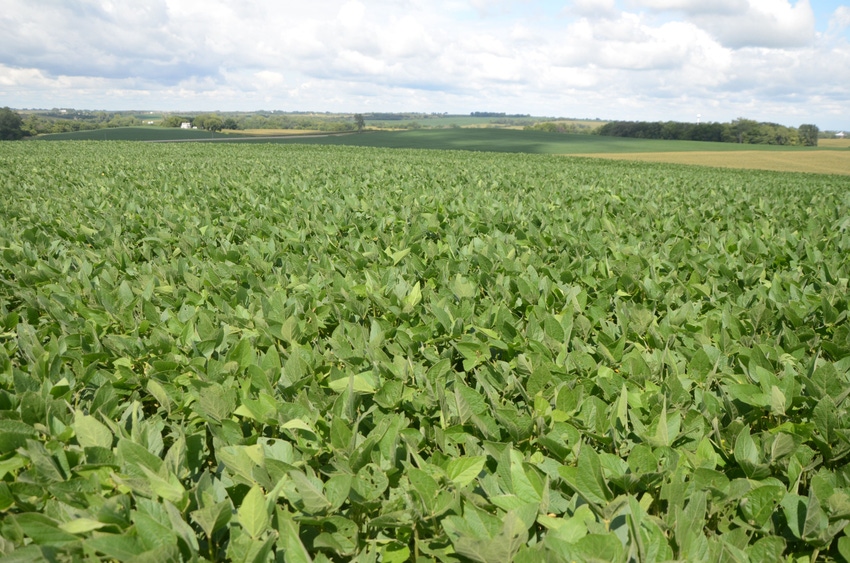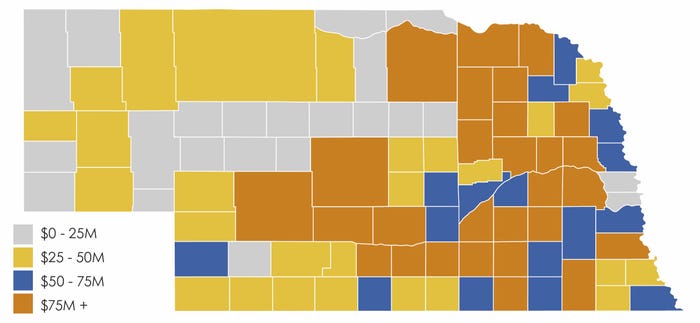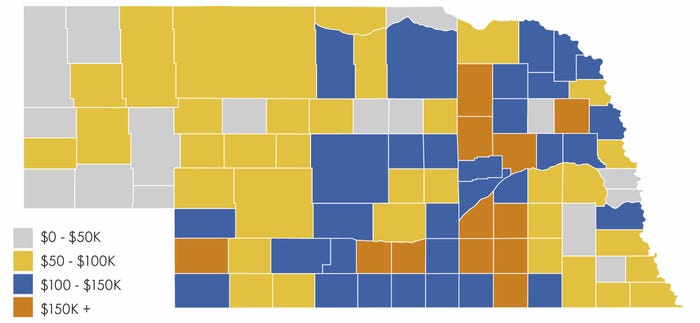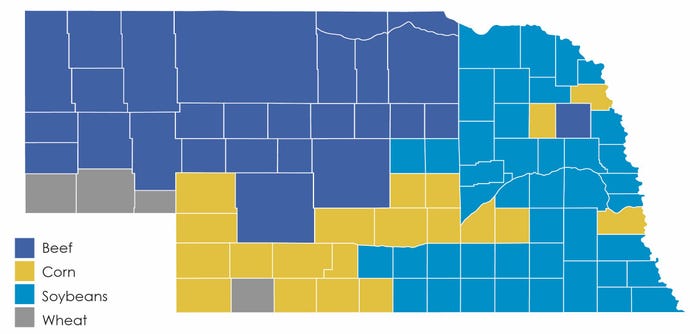
Yesterday, on National Ag Day, Nebraska Farm Bureau unveiled a new report illustrating the benefits of trade for Nebraska agriculture. And, while Nebraska is the Cornhusker State and the Beef State, the report shows Nebraska soybeans benefit the most from exports – followed by corn, beef and distillers grains.
"Nebraska in 2016 was the fifth largest ag exporting state in the nation. In that year, we exported an estimated $6.6 billion of ag exports," said Jay Rempe, senior economist at Nebraska Farm Bureau. "The first three, soybeans, corn and beef were all over a billion dollars, and distillers grains was about $300 million dollars. Our exports in 2016 are three times the value that they were in the year 2000."
And that number continues to grow, Rempe added.
Similar to previous studies on the North Atlantic Free Trade Agreement (NAFTA), and the U.S.-Korea Free Trade Agreement (KORUS), this study examines the value of trade based on 2016 export values for each commodity, and the amount of production in the state in 2016. The report also apportions the value of total ag exports across counties based on production in the county, and gives an estimated per-farm value for exports.
The value of soybean exports, including both soybeans and soybean meal, was worth $6.27 for the state of Nebraska. The value of corn exports, including ethanol and distillers grains, was worth $1.03 per bushel. Meanwhile, the export value of wheat was $2.04 per bushel, beef $169 per head, and pork $68 per head.
Ag powerhouse counties
At the county level, Platte, Cuming, Custer, Holt and Antelope counties were in the top five, with over $148 million, $141 million, $139 million, $132 million, and $129 million in total export value in 2016, respectively.
"I'm going to start calling these the powerhouse counties in terms of ag exports, because in all the trade agreements we've looked at, these counties consistently come out on top," said Rempe. "I think the reason is not only are they near the top in corn and soybean production in the state, but they also have a healthy livestock sector. For four of the counties, Cuming, Custer, Holt and Antelope, cattle production is a significant portion of their county agriculture base. For Platte County, it was pork."

COUNTY LEVEL BREAKDOWN: Estimated total ag export value per county using 2016 export values. Platte, Cuming, Custer, Holt and Antelope counties were in the top five, with over $148 million, $141 million, $139 million, $132 million, and $129 million in total export value in 2016, respectively.
On a per farm basis, Phelps County came out on top, with an average export value of $265,921 per farm, followed by Kearney County at $241,437 per farm, and Fillmore County at $199,873 per farm.
Lastly, the report evaluated the top export commodities for each county.
"What we found is a bit surprising. In 42 counties in the state, soybeans were the top export commodity in terms of value. Beef came in next in 28 counties, and corn was in 19 counties, and wheat in four counties," Rempe said. "I say that's somewhat surprising, because if you ask most Nebraskans what our most important exports would be, they would say corn and beef. But you can see in most Nebraska counties it's soybeans. The reason is nearly half of our soybeans are exported out of the country, whereas corn stays and is processed into ethanol or fed to cattle or hogs."

INDIVIDUAL FARMER BENEFIT: The report also estimates the value of ag exports on a per farm basis for each county. Phelps County came out on top, with an average export value of $265,921 per farm, followed by Kearney County at $241,437 per farm, and Fillmore County at $199,873 per farm.
Regionally, most of the eastern third of the state saw the biggest export benefits from soybeans, while the Sandhills and northern Panhandle saw the biggest benefit from beef exports. The central and southwest parts of the state saw the biggest benefit from corn exports, while the southern Panhandle benefited the most from wheat exports.
Real market risk
The top two markets for U.S. soybeans and Nebraska soybeans are China, followed by Mexico, and Nebraska Farm Bureau president Steve Nelson noted that at a time when President Trump and his administration are looking to implement tariffs on places like China, and considering withdrawing from trade deals like NAFTA, the analysis continues to show trade is critical to Nebraska agriculture. This has drawn criticism from the agricultural community over fear of trade wars and retaliatory tariffs placed on U.S. ag products.

TOP EXPORTS: For 42 of Nebraska's counties, soybeans were the top export – mostly in the eastern third of the state. Beef came in second in 28 counties in the Sandhills and northern Panhandle. Meanwhile, corn was the top export in 19 counties in the central and southwest parts of the state, while wheat was the top export in four counties – mostly in the southern Panhandle.
"There's a fairly wide range between counties based on the production and the type of production in those counties, but those are significant numbers all the way across the board," said Nelson. "Any kind of further disruption that would lower those numbers I think could create more difficulties for farmers and ranchers."
In a recent example, Jordan Dux, national affairs director at Nebraska Farm Bureau, noted the European Union's list of products to place retaliatory tariffs on, should the U.S. expand tariffs on steel and aluminum imports – that list included imports of U.S. corn. "When you go down this path, it certainly is our fear that you begin that process of initiating what we've talked about is a trade war – we have a tit-for-tat retaliation of things," Dux said. "That's a very real thing for us."
Read the full report at: www.nefb.org/images/FEDeration/PDFs/NE-Agriculture-International-Trade.pdf
About the Author(s)
You May Also Like






